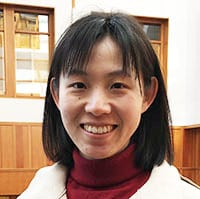Research Summary
Proteins perform a vast array of functions within organisms, but they rarely act alone as their functions tend to be regulated. Many molecular processes within a cell are carried out by molecular machines that are built from a large number of protein components organized by the protein-protein interactions. These interactions make up the so-called interactome of the organism, while aberrant protein-protein interactions are the basis of multiple aggregation-related diseases.
Understanding the interactome under living conditions is crucial yet challenging due to the lack of tools. My previous work has been focused on developing strategies that couple releasable genetically encoded photocrosslinking with quantitative proteomics to capture and study protein-protein interactions under living conditions. These strategies enabled me to side-by-side compare the clients of two homologous chaperones under acid stress and identify the substrates of a protease under high temperature growth conditions.
Now I focus on studying the protein-protein interactions under oxidative stress. Actually, the perception of reactive oxygen species has evolved from agents of cellular damage to signaling molecules that modify signaling proteins in physiology and the disease state such as cancer. As cysteine and methionine are the two main residues that would be oxidized, understanding how and why these residues get oxidized would definitely help us learn about biological regulation. While people have invested great effort in understanding the oxidized cysteine, little is known about oxidized methionine in regulating protein activities and signaling transduction. I am interested in understanding the role of active methionine residues in human cell culture, three-dimensional culture models, yeast and mouse models.
Impact in China
Aberrant protein-protein interactions especially during oxidative stress are the basis of age-related diseases, such as Alzheimer’s disease. With the training at UC Berkeley, I hope to provide new insights into our understanding of the related pathways and new targets of clinic therapy.
Publications
- He*, X. Xie*, P. R. Chen, Quantitative and comparative profiling of protease substrates through a genetically encoded multifunctional photocrosslinker. Angew. Chem. Int. Ed. Eng. (2017), 56, 14521
- Zhang*, D. He*, Y. Yang, S. Lin, M. Zhang, S. Dai, P. R. Chen, Comparative proteomics reveal distinct chaperone-client interactions in supporting bacterial acid resistance. Proc. Natl. Acad. Sci. U.S.A. (2016), 113, 10872
- Zhang, D. He, Z. Lin, Y. Yang, H. Song, P. R. Chen, Conditional chaperone-client interactions revealed by genetically encoded photocrosslinkers. Acc. Chem. Res. (2017), 50, 1184
- Yang, H. Song, D. He, S. Zhang, S. Dai, X. Xie, S. Lin, Z. Hao, P. R. Chen, Genetically encoded releasable photocrosslinkers for studying protein-protein interactions in living cells. Nat. Protoc. (2017), 12, 2147
- Yang, H. Song, D. He, S. Zhang, S. Lin, S. Dai, R. Meng, C. Wang,P. R. Chen, Genetically encoded cleavable and mass spectrometry-identifiable Protein photocrosslinker. Nat. Commun. (2016), 7, 12299
- Lin, D. He, T. Long, S. Zhang, R. Meng, P. R. Chen, Genetically encoded cleavable protein photocrosslinker. J. Am. Chem. Soc. (2014), 136, 11860
*Co-first authors
